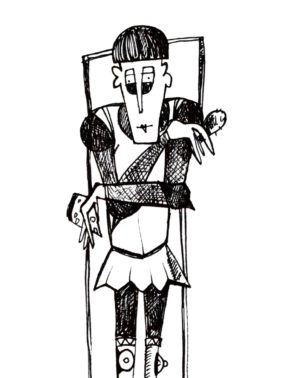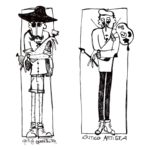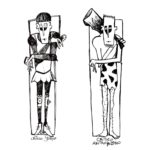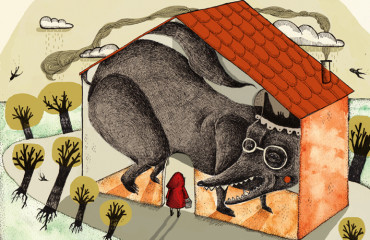
by Giovanni Ballarini
5 – The historian-critic assumes a big variety of faces, depending on his specia-lization. For example, the medievalist, of each dish or menu he simply recalls that in the middle Ages and so on. etc. wasting time describing precious and unknown eating habits of a past irretrievably lost, revealing many details now totally outdated and useless, with little or no attention to the dish itself, giving the impression (but not only this) he wants to talk to other specialists, with whom often disagree, even acrimonious, providing meticulous details, poorly understood by most people.
6 – The anthropologist-critic is an ever-changing “species” and under some aspects dangerous for the consequences to which he comes, or he seems to get. It is often difficult to understand where he intends to lead his speech, which is not so much the food, as eating habits, which are never clearly specified, as he tends to scientists-critics and to some extent the sociologists-critics. He loves to refer to eating habits, if not It recipe, even prehistoric ancient, or peoples of distant continents and unknown to the most people, in this also approaching to globetrotter-critic. When he appears in public, likes to dress casual.
7 – The globetrotter-critic is always looking for foods, recipes, restaurants, and so on preferably located in the strangest, remote, isolated and (if there are any…) unknown places to most people. They are those who are in constant search of the gastronomic lost ark, and found by them, indicate to a million people a trattoria of ten covers that in a certain week of the year prepares a dish with a few tens of kilograms of (their deemed exceptional) local legume. It is worth a trip, they say. The trip, especially if long and perilous, more than cooking and gastronomy, is their interest, and they tend to prove it, when they are in the television limelight, with a long-time travelers’ decoration of clothes.
8 – The artist-critic judges according to aesthetics, “his” aesthetic. Beauty, harmony, grace of a dish, of a local and sometimes even of the cook or owner, especially if she-cook or she-owner, are the focal point of their interventions. The rest seems to count little or nothing. Their language is both floral and abstruse, full of references unknown to the majority, mainly artistic (“clearly Caravaggio kitchen colors…1e Always without a tie, with sweaters of bright colors or noble and expensive brands, more than making criticisms tend to want to teach arcane things to audiences of unwary who ignore the arcane mysteries of the gourmet art, unknown even to the same artists who practice it (unconsciously, they imply these critics).
Continues…
 English
English  Italiano
Italiano 




